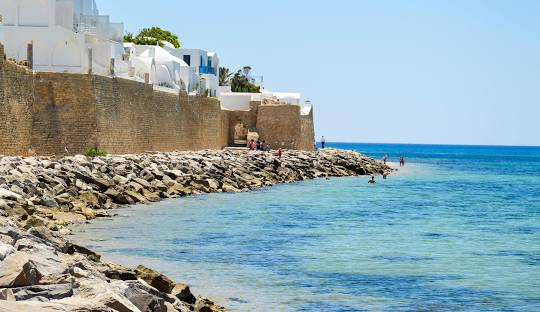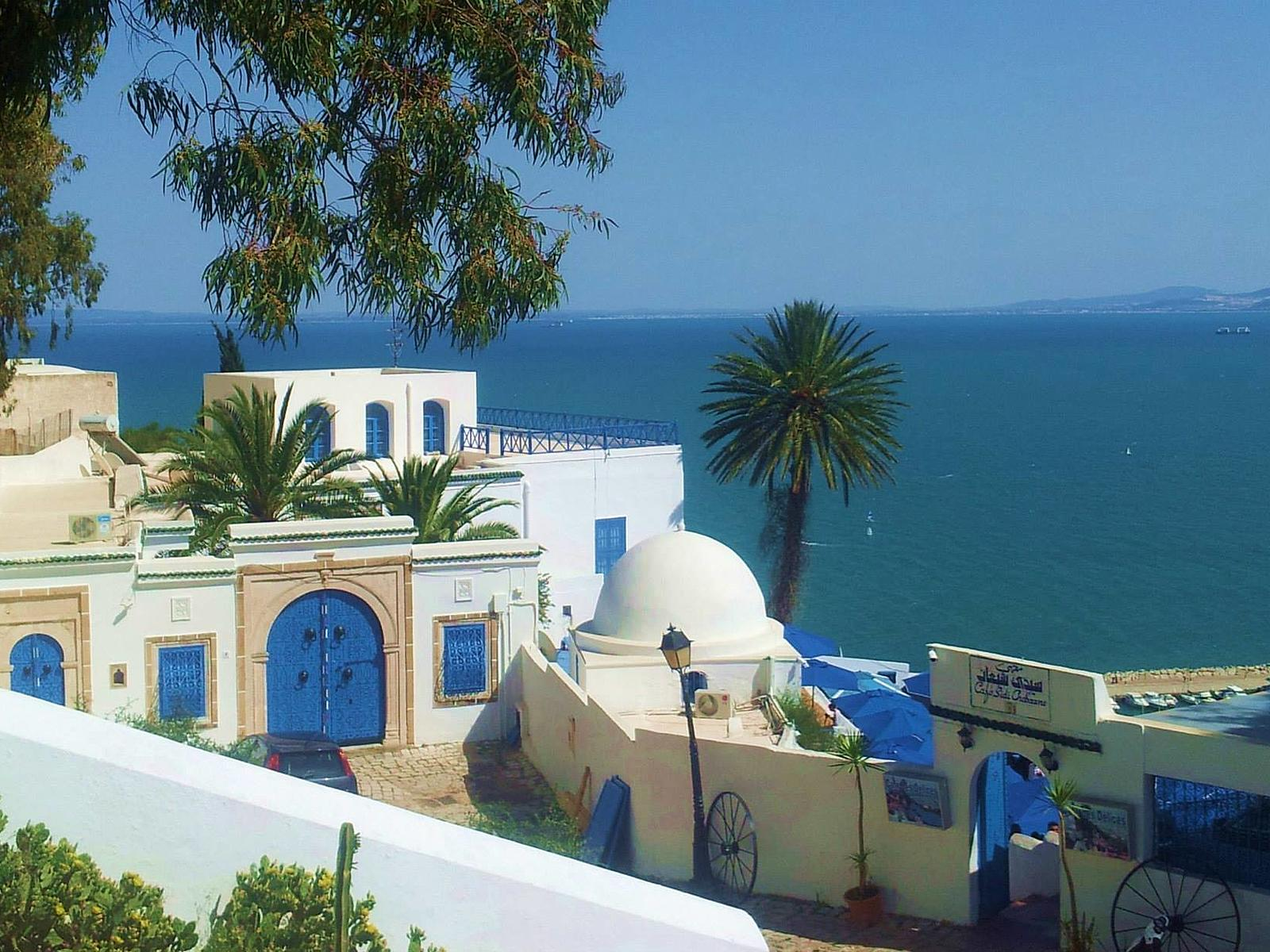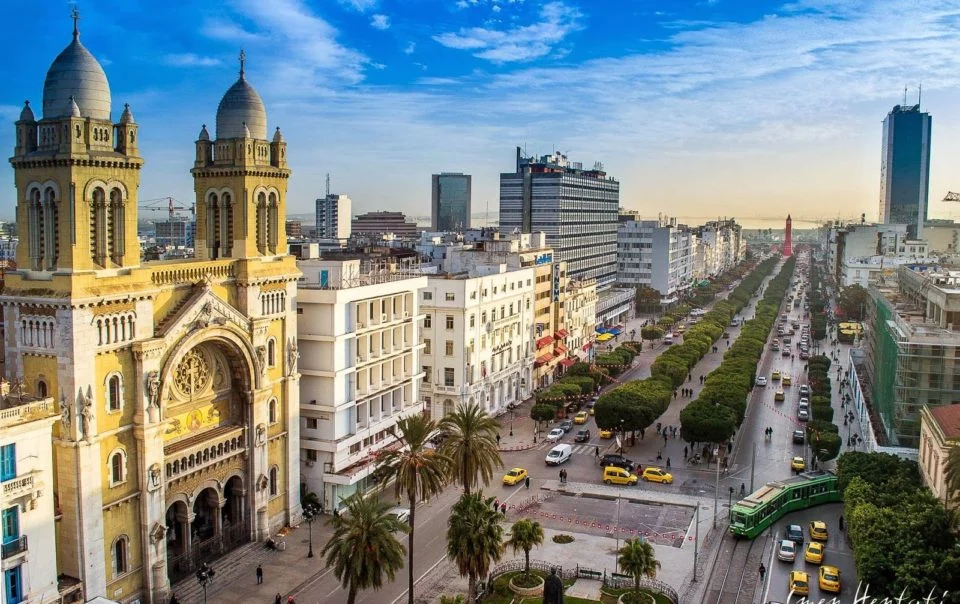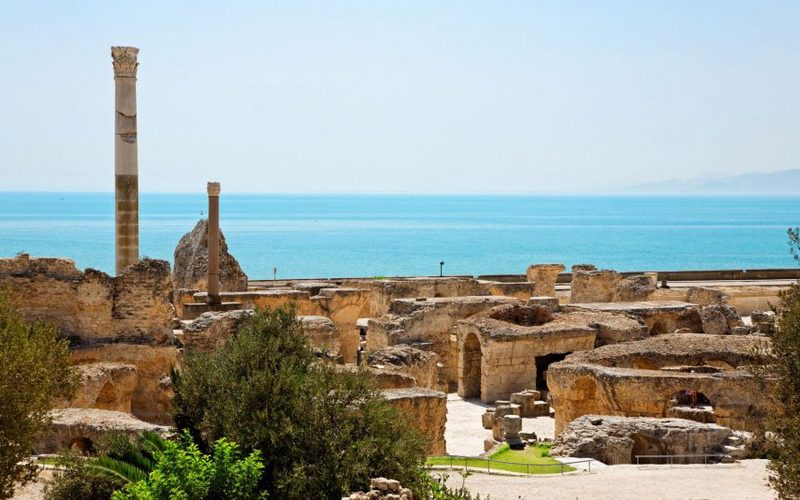Introduction:
Tunisia, a land of rich history and diverse landscapes, it is home to some of the most enchanting cities in North Africa. It is quite difficult to say that there is “ONE MOST BEAUTIFUL” city in Tunisia, that’s why in this blog post we’ll explore the best and most visited cities in this charming country.
Unveiling the Contenders: Hammamet, Sidi Bou Said and Tunis
Tunisia boasts a myriad of cities each with its unique charm, but one stands out as the epitome of beauty. From the coastal allure of Hammamet to the historical richness of Carthage, the competition is fierce.
Hammamet: The Coastal Paradise

Nestled along the Mediterranean, Hammamet is renowned for its pristine beaches, azure waters, and vibrant markets. The juxtaposition of modern luxury resorts against the backdrop of ancient Medina walls creates a picturesque scene that captivates every visitor. You can find many Five Star resorts in Hammamet, especially in the south of the city, which is called “Hammamet Sud”, where you can find a well equipped marina and great beaches.
Sidi Bou Said: A Blue and White Oasis

The iconic blue and white architecture of Sidi Bou Said, overlooking the Gulf of Tunis, has earned it the nickname “the blue city.” Some people say that it steals the throne from the greek city “Santorini” for this unique architecture. It has many cobblestone streets, whitewashed buildings adorned with blue doors and windows, and blooming bougainvillea create a dreamlike atmosphere.
Tunis: Where History Meets Modernity

The capital city, Tunis, seamlessly blends history with modernity. The UNESCO-listed Medina, with its labyrinthine alleys and vibrant souks, contrasts with the modern city center. Bardo Museum, with its extensive Roman mosaics collection, adds to the city’s allure.
Carthage: Ancient Glory and Ruins

Steeped in history, Carthage is a captivating city that once rivaled Rome. Founded by the Phoenicians in the 9th century BC, Carthage became a powerful maritime empire. Its historical significance is immortalized in the ruins that dot the landscape.
- Punic Ruins: Echoes of AntiquityThe Punic Ruins of Carthage offer a glimpse into its ancient past. The remnants of Byrsa Hill, including the Punic Quarter and the Carthage National Museum, showcase artifacts and structures dating back to Carthage’s earliest days.
- Roman Theater and Baths: Grandeur PreservedThe well-preserved Roman Theater and Baths of Carthage transport visitors to the era of Roman rule. The theater, with its commanding view of the sea, and the intricate Roman baths stand as testaments to the city’s architectural prowess.
- Antonine Baths: Ancient Engineering MarvelThe Antonine Baths, one of the largest bath complexes of the Roman Empire, illustrate Carthage’s sophistication. The colossal ruins highlight the engineering prowess of ancient Carthaginians.
The Crown Jewel: Kairouan – City of Spiritual Tranquility

Amidst the contenders, Kairouan emerges as the true jewel, earning the title of the most beautiful city in Tunisia. Here’s why:
The Great Mosque of Kairouan: A Spiritual Marvel
The Great Mosque, founded in the 7th century, stands as a testament to Islamic architecture. With its intricate geometric patterns, stunning calligraphy, and peaceful courtyards, it remains a spiritual and architectural marvel.
Medina of Kairouan: A UNESCO Heritage Site
The UNESCO-listed Medina of Kairouan preserves the authenticity of a traditional Islamic city. Narrow winding streets, bustling souks, and historic monuments create an immersive experience that transports visitors to another era.
Aghlabid Basins: Serenity Amidst History
The Aghlabid Basins, dating back to the 9th century, are not only a historical site but also a tranquil oasis. Surrounded by gardens, these basins reflect the ingenuity of ancient water management.
The Beauty of the Tunisian Desert: A Tranquil Mirage

Beyond the vibrant cities, Tunisia’s beauty extends to its deserts. The vastness of the Sahara Desert, with its undulating dunes and golden landscapes, provides a stark yet mesmerizing contrast to the coastal cities.
- Tozeur: Gateway to the SaharaTozeur, a desert oasis, serves as the gateway to the Sahara. The palm-fringed oasis, ancient medina, and unique architecture make it a captivating destination for those seeking an authentic desert experience.
- Chott el Jerid: Salt Flats and Ethereal ViewsChott el Jerid, a massive salt flat, creates an otherworldly panorama. The ethereal views, especially during sunset, offer a tranquil and surreal experience, with the salt reflecting the changing colors of the sky.
Conclusion:
While Tunisia boasts several stunning cities, Kairouan, with its spiritual tranquility, historical richness, and architectural marvels, takes the crown as the most beautiful city in the country. Whether you seek cultural immersion, coastal beauty, or historical depth, Tunisia offers a diverse tapestry of cities waiting to be explored. Plan your journey and let the enchantment of the most beautiful city in Tunisia unfold before your eyes.
Frequently Asked Questions about Tunisia
- Is Tunisia a safe destination for travelers?Tunisia is generally considered safe for tourists. The government has implemented measures to enhance security, especially in popular tourist areas. However, it’s advisable to stay informed about current travel advisories and follow local guidelines for a safe and enjoyable experience.
- What is the best time to visit Tunisia?The best time to visit Tunisia is during the spring (March to May) and fall (September to November) when the weather is mild, and outdoor activities are enjoyable. Summer (June to August) can be hot, especially in the southern regions, while winter (December to February) is cooler, particularly in the evenings.
- What are the visa requirements for traveling to Tunisia?Many nationalities, including those from the United States, European Union, and several other countries, can enter Tunisia visa-free for short stays. However, it’s essential to check the specific visa requirements based on your nationality before planning your trip.
- How is the local cuisine in Tunisia, and is it suitable for vegetarians?Tunisian cuisine is diverse and flavorful, with influences from Arabic, Berber, and Mediterranean traditions. While the cuisine is known for its delicious meat dishes, there are also plenty of vegetarian options, including couscous, falafel, and various vegetable-based stews.
- What cultural norms should I be aware of when visiting Tunisia?Tunisia is a predominantly Muslim country, and visitors should be respectful of local customs. Dress modestly, especially in religious sites, and avoid public displays of affection. It’s customary to greet people with “As-salamu alaykum” (peace be upon you) and use your right hand for greetings and gestures.
- How is transportation within Tunisia, and is it easy to get around?Tunisia has a developed transportation system, including buses, trains, and taxis. Major cities are connected by reliable transportation but it is not precise nor comfortable to use buses or trains. Renting a car is also an option for those looking to venture into more remote areas. We recommend to use taxies or to rent your own car.
- Are English and other languages widely spoken in Tunisia?While Arabic is the official language, French is widely spoken, especially in urban areas and tourist destinations. English is also understood in tourist areas, but learning a few basic Arabic or French phrases can enhance your interactions with locals.
- What are the must-see attractions in Tunisia, apart from the beautiful cities?In addition to the captivating cities, Tunisia offers unique attractions such as the ancient ruins of Dougga, the Star Wars filming locations in Matmata, and the stunning landscapes of the Atlas Mountains. Exploring these diverse sites will provide a more comprehensive experience of the country.
- Can I use credit cards in Tunisia, or should I carry cash?While credit cards are accepted in major hotels, restaurants, and shops, it’s advisable to carry some cash, especially in more remote areas and markets. ATMs are widely available in urban centers for convenient cash withdrawals. Cash is widely used in Tunisia, you can be surprised how much credit cards are not used in Tunisia.
- What souvenirs can I buy in Tunisia?Tunisia offers a variety of unique souvenirs, including traditional handicrafts such as carpets, ceramics, and leather goods. Olive oil, spices, and local sweets are also popular choices. When shopping, don’t forget to haggle for the best prices in markets and souks.

0 Comments